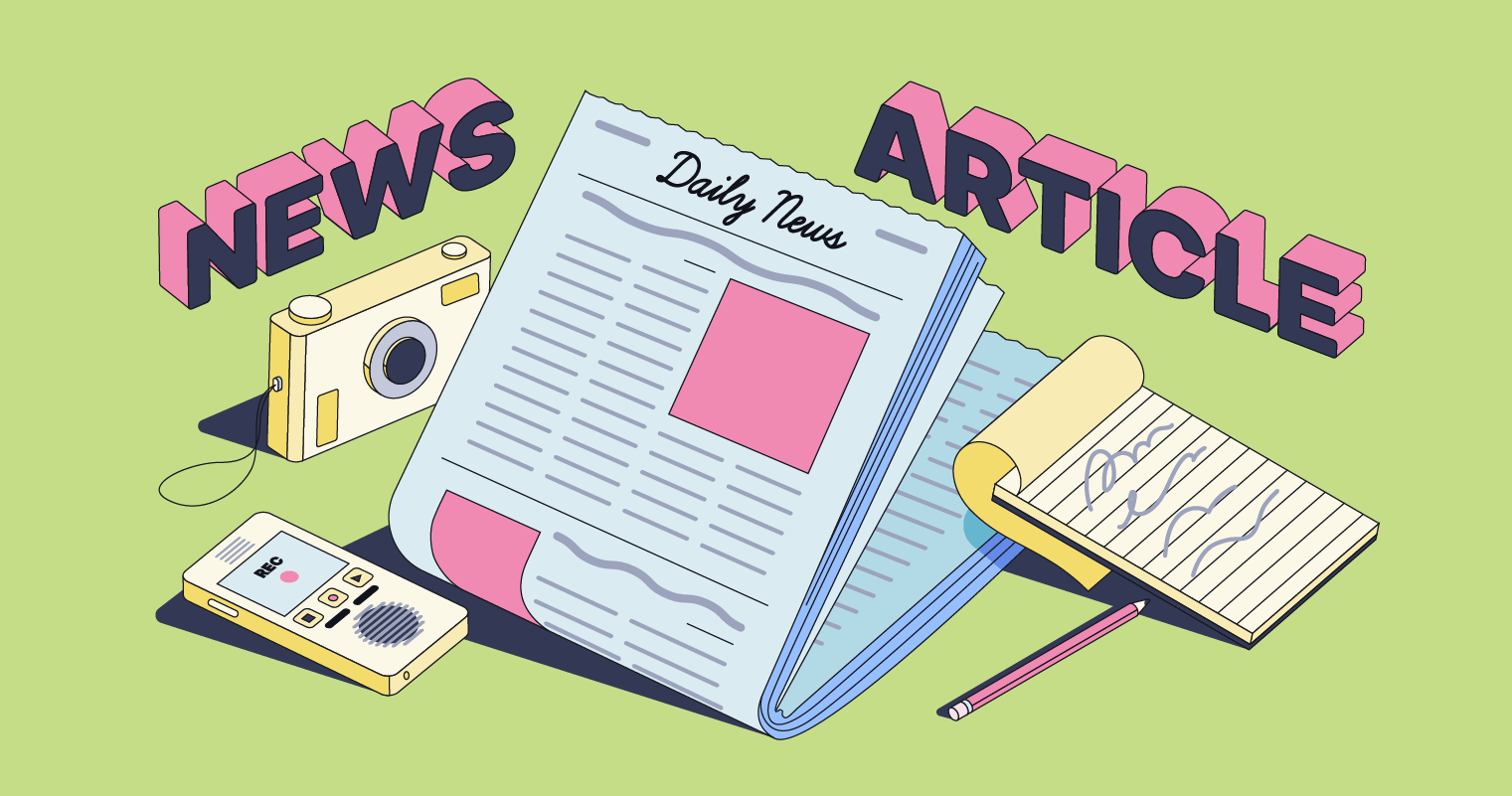4 Simple Techniques For News Articles
Wiki Article
Facts About News Articles Uncovered
Table of ContentsLittle Known Questions About News Articles.What Does News Articles Do?Excitement About News ArticlesExamine This Report about News ArticlesThe Main Principles Of News Articles
Good knowledge of different topics provides pupils an one-upmanship over their peers. Also though digital and social networks are readily accessible, we must not neglect exactly how important it is to read the newspapers. Parents have to attempt and inculcate the practice of reading a paper as a day-to-day routine to continue the tradition of the adored print medium.Newspaper article additionally consist of a minimum of one of the complying with vital qualities about the designated audience: proximity, prestige, timeliness, human interest, quirk, or repercussion. The associated term journalese is sometimes used, normally pejoratively, to describe news-style writing. Another is headlinese. Papers normally abide by an expository writing style.
Within these limitations, newspaper article likewise aim to be thorough. Other aspects are involved, some stylistic and some obtained from the media type. Amongst the bigger and much more highly regarded newspapers, justness and equilibrium is a significant variable in presenting details. Commentary is normally confined to a separate section, though each paper might have a different general angle.
Newspapers with a global target market, for instance, tend to utilize a more formal design of creating. The specific options made by a news electrical outlet's editor or content board are commonly collected in a style guide; common design guides consist of the and the US News Design Book. The major goals of information writing can be summed up by the ABCs of journalism: precision, brevity, and clearness.
News Articles for Dummies
Generally, reporters will certainly not use a long word when a short one will do. They utilize subject-verb-object building and construction and vivid, active prose (see Grammar). They provide narratives, instances and allegories, and they hardly ever depend on generalizations or abstract ideas. News writers try to avoid using the same word greater than when in a paragraph (occasionally called an "resemble" or "word mirror").
Headlines in some cases omit the topic (e.g., "Leaps From Boat, Catches in Wheel") or verb (e.g., "Feline woman fortunate"). A subhead (additionally subhed, sub-headline, subheading, caption, deck or dek) can be either a secondary title under the primary headline, or the heading of a subsection of the article. It is a heading that comes before the main text, or a team of paragraphs of the main message.

Additional signboards of any of these types might show up later in the write-up (particularly on subsequent web pages) to attract more reading. Such billboards are likewise used as reminders to the post in other sections of the publication or website, or as advertisements for the item in other publication or websites. Common framework with title, lead paragraph (summary in vibrant), other paragraphs (information) and get in touch with information.

Example of a hard-lead paragraph NASA is proposing an additional area job. The budget demands around $10 billion for the job.
An "off-lead" is the 2nd most essential front page news of the day. To "hide the lead" is to begin the post with history info or details of secondary relevance to the visitors, forcing them to check out more deeply into a short article than they must have to in order to discover the important factors.
Getting My News Articles To Work
Common use is that or two sentences each form their own paragraph. Reporters normally view website describe the company or structure of a newspaper article as an upside down pyramid. The important and most interesting components of a tale are placed at the start, with supporting details complying with in order of reducing significance.It allows people to explore a subject to only the deepness that their interest takes them, and without the charge of details or nuances that they might consider unnecessary, but still making that info readily available to a lot more interested visitors. The inverted pyramid structure additionally enables posts to be trimmed to any arbitrary length throughout format, to fit in the area offered.
Some authors start their tales with the "1-2-3 lead", yet there are several type of lead offered. This format usually begins with Visit Website a "Five Ws" opening up paragraph (as defined above), followed by an indirect quote that offers to sustain a significant aspect of the initial paragraph, and afterwards a straight quote to sustain the you could check here indirect quote. [] A kicker can refer to several points: The last story in the information program; a "happy" story to finish the program.
Longer short articles, such as publication cover write-ups and the pieces that lead the inside areas of a paper, are recognized as. Function stories differ from straight information in a number of means.
Everything about News Articles
The reporter frequently information communications with interview topics, making the piece extra individual. An attribute's first paragraphs frequently connect an interesting minute or event, as in an "anecdotal lead". From the details of an individual or episode, its sight quickly expands to generalizations about the story's subject. The section that indicates what an attribute has to do with is called the or billboard.
The Editor's Toolbox: A Referral Guide for Beginners and Professionals (2001) Allan M. Siegal and William G. Connolly. The New York Times Handbook of Design and Use: The Official Design Guide Made Use Of by the Writers and Editors of the World's The majority of Authoritative Paper (2002) M. L. Stein, Susan Paterno, and R.
Report this wiki page